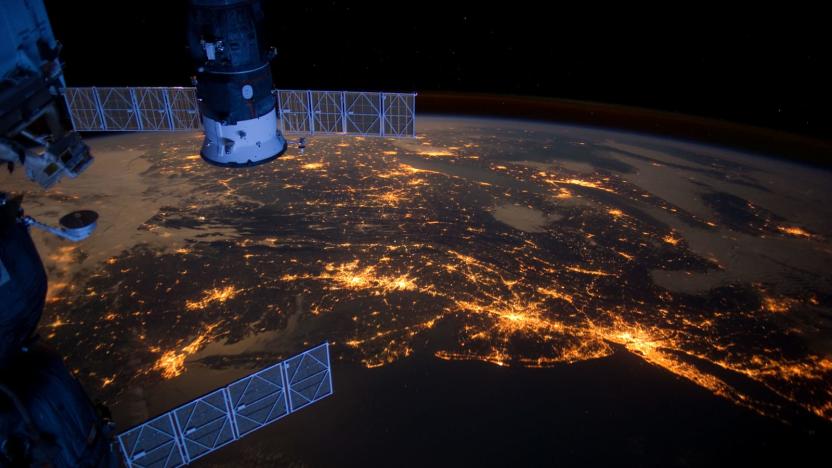lightpollution
Latest

Our nights keep getting brighter
Our nights are getting brighter and they have been every year since 2012, according to a new study published today in Science Advances. Researchers led by Christopher Kyba at the GFZ German Research Centre for Geosciences used satellite imagery to track changes in nighttime outdoor artificial lighting around the world and they found that between 2012 and 2016, the amount of lit area grew by 2.2 percent per year. The amount of brightness from continuously lit areas also increased by 2.2 percent per year. So not only is more area being illuminated at night, already lit areas are getting even brighter. "We're losing more and more of the night on a planetary scale," said the journal's editor, Kip Hodges.

A third of the world can no longer see the Milky Way
If you never thought light pollution was a problem before, think again. New research claims that more than a third of humanity cannot see the Milky Way anymore, because artificial lights have made the night sky too bright to view the galaxy.

The Big Picture: Los Angeles' light pollution, as seen from space
What you see above is a stunning image of California (and surrounding areas), captured from space by astronaut Scott Kelly. But what quickly stands out is Los Angeles, with its bright lights shining through and morphing into one massive, glowing spot. As Quartz points out, this shows the city's massive light pollution problem -- which, in the past, has been subject to countless research pieces and even a Kickstarter book/video series. City of Angels? More like City of Lights.

'Cities at Night' uses ISS photos to map light pollution
The Cities at Night project organizers began compiling hundreds of thousands of nighttime photos of metropolises taken from the ISS in order to study light pollution last year. NASA even asked the public for help to sort through millions of images to be used for the initiative. Now, Cities at Night has already helped confirm that the source of the diffuse glow around cities visible from space (first spotted by the Defense Meteorological Satellite Program) is none other than street lighting. That diffuse lighting is separate from lights emanating from buildings and vehicles, but scientists couldn't determine its exact origin from low-res satellite photos alone.

Chinese activists complain of Apple Store light pollution
Environmental activist group, Friends of the Earth HK, claims Apple's Causeway flagship store in Hong Kong is a major contributor to light pollution in the area. Apple reportedly runs about 500 lamps and spotlights over night, and the light spills outside of the store into the Hong Kong streets. According to a report in M.I.C. Gadget, Friends of the Earth HK says light from the store can be seen as far as 700 meters away. Hong Kong is known for its colorful and illuminated skyline, but all these lights may be having a negative effect on residents. A recent study suggests that parts of Hong Kong have light levels that are 1,200 times higher than international standards. This nighttime brightness is affecting the sleep patterns of residents who can't escape the blinking neon. A government task force is looking at ways of curbing light pollution from restaurants, retail outlets and other buildings in the area. Though Apple isn't being targeted by the government, M.I.C. Gadget claims the council has received several complaints about the amount of light pouring out of Apple's retail stores at night.

Homestar gets a lot cooler: now includes GPS support
I got a little flak in my previous post about Homestar, the non-game where you can learn about the stars. It seems like you guys really were interested in the game (at least those of you brave enough to leave comments). Well, Impress Watch has revealed that the game will be the second to support the upcoming GPS peripheral. Using the device, the game will be able to recreate what your night sky should look like. If you live in New York City like I do, that means you haven't seen the stars in years due to light pollution. Homestar just got a whole lot cooler in my book.Although the GPS peripheral does not have a release date, Homestar comes out in Japan in October. Check out Impress Watch for more screenshots of the game in action.[Via IGN]





